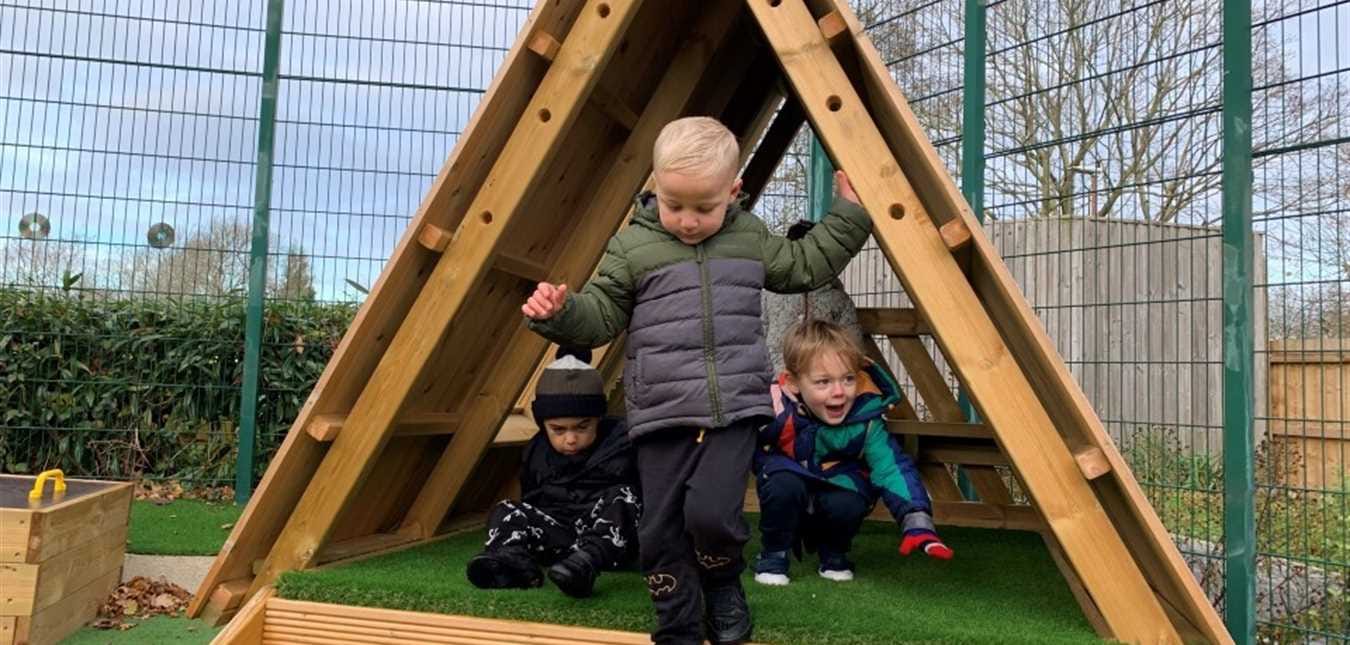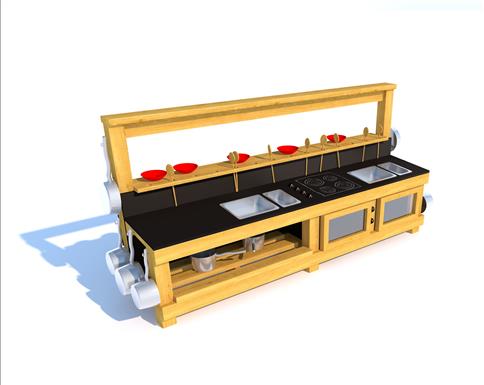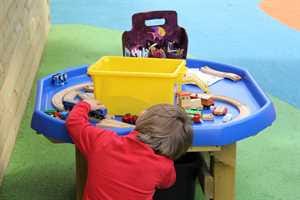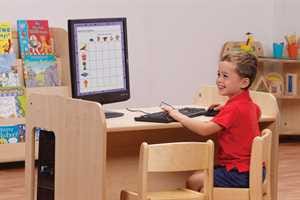
Children's Health
Enhance children's wellbeing by practicing Winter wellbeing activities within your playground!
'How can I improve wellbeing in my school?’
It’s a question we hear a lot these days.
Before any of us can try to answer properly, it’s important to think about what exactly ‘wellbeing’ really means to us.

Simply put, our wellbeing is about how we are ‘getting on’ as individuals, both physically and mentally. This will be influenced by our general health, our day to day life experiences, the environment in which we live, and how we feel about each of them.
Our psychological needs form the lion’s share of what makes us who we are as human beings - feeling and recognising emotions, how we feel about ourselves, our sense of purpose and the quality of our relationships with others.
Adult or child - in order to be able to function properly as individuals, to continue to learn, and to enjoy and make the most of life (whatever that might mean to us) - our wellbeing matters enormously.
It’s hugely important to pay attention to it, and to take the time to do whatever it is that we may need to do to care for it.
So, that established, how can we begin to actually improve wellbeing in a school environment?

Firstly, and most importantly, this is not about perfection! Worrying about trying to do everything perfectly is counterproductive.
The idea is supposed to be to relieve stress and anxiety and to do that you need to allow room to ‘go with the flow’. We’ve all been through untold stresses and pressures over the past couple of years.
Now more than ever it’s important to take time to do some really simple and enjoyable things, breathing and ‘being’ for a while.
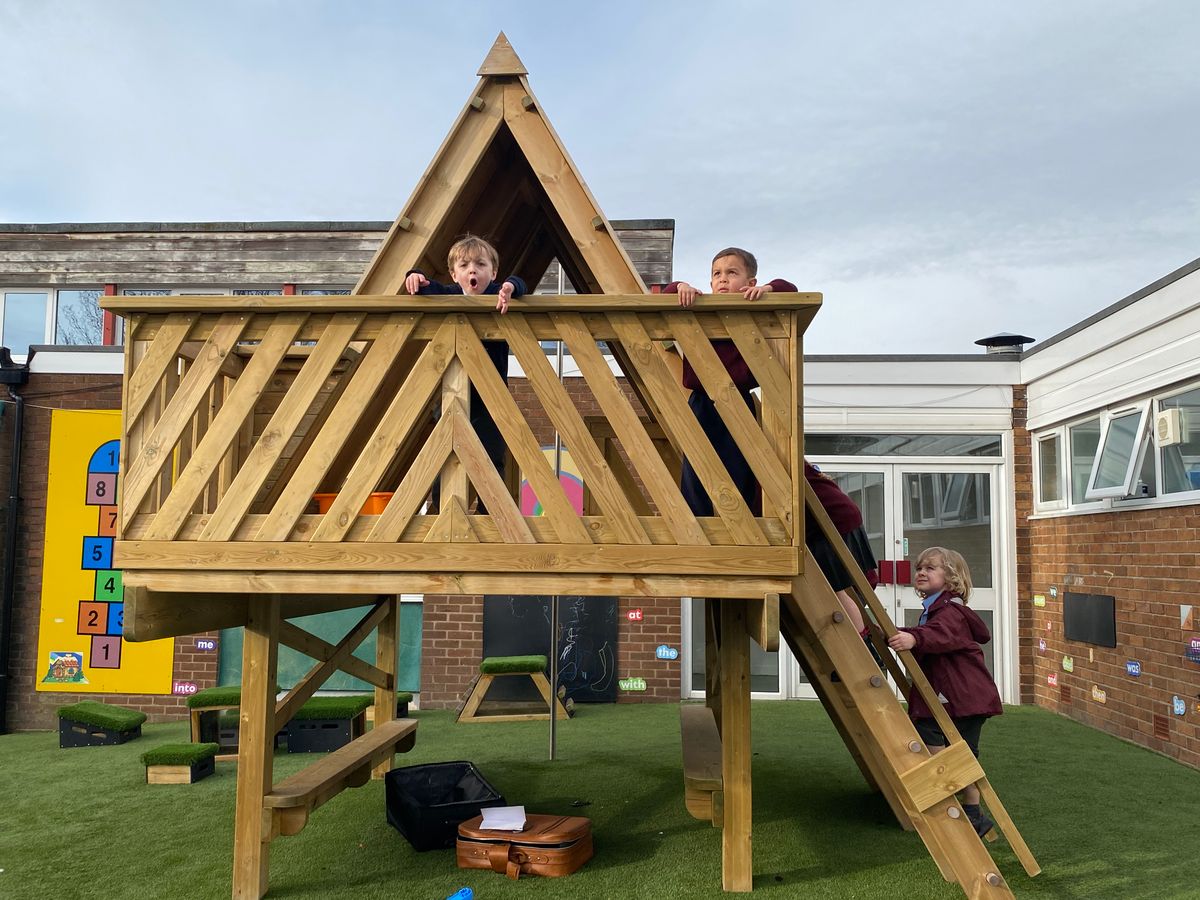
Secondly, go outdoors! Being outdoors and connecting with nature is well-known for its power to improve wellbeing, and brings with it so many health benefits. Even just 15 minutes a day in the great outdoors can improve mood, boost self-esteem, increase motivation and energy levels and support our immune systems.
Children especially need regular opportunities to move, and we can easily be more active when we’re outdoors.
Here are 7 simple outdoor activity ideas to enjoy at this time of year that foster playfulness, imagination and creativity - all using your outdoor learning environment as a naturally relaxing and stimulating space to help promote good mental health and wellbeing in your school.
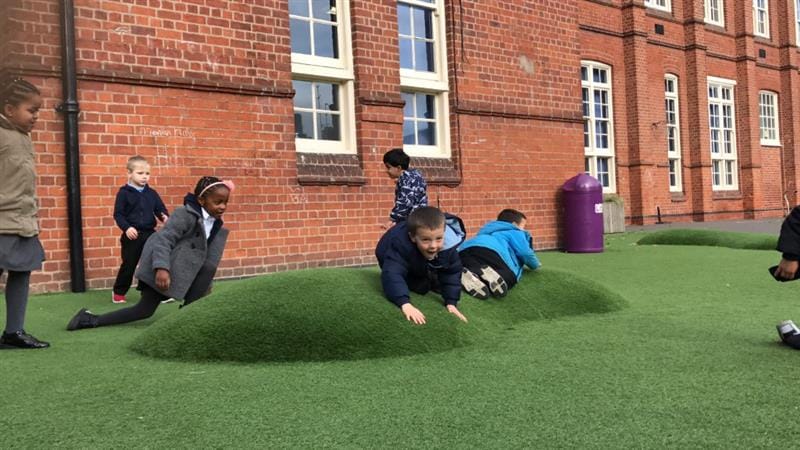
Each activity is designed to help young learners to develop and maintain positive, informed behaviours to care for and respect themselves and others.
They can support children in finding ways to regulate their emotions, encouraging their sense of self-worth, lifting their mood and boosting their energy levels.
Stomp It Out
As a teacher, you will know very well that feeling when it’s time to press the ‘reset’ button to shift focus and improve their attention. Whether it’s waking them up, calming them down, or just one of those days when everyone needs to take a bit of a ‘time out’ before they can be ready to learn again.
Going for a simple walk is one of the easiest outdoor wellbeing activities out there, yet arguably one of the most effective. Wrap up for the weather and head out for a short walk on the playground/school field, or around the local area if you can, to breathe in the fresh air.
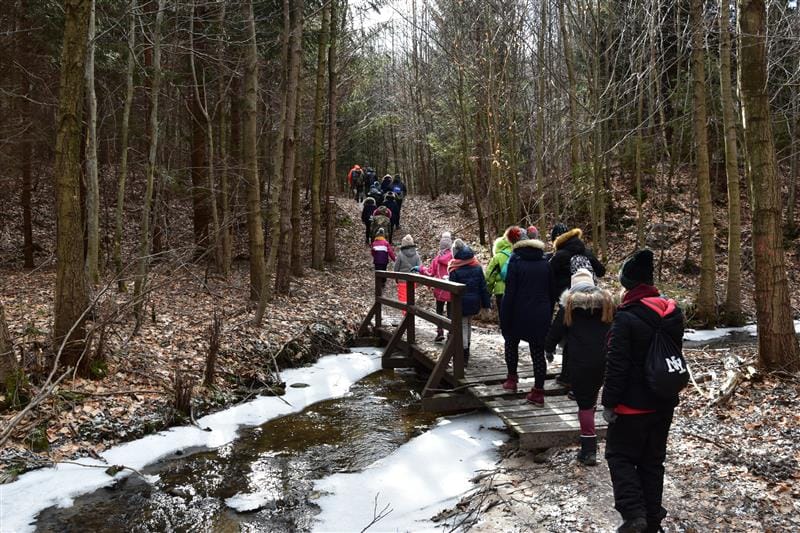
Winter is a great time for this as there are some fascinating sights for children to discover during their walk - frost on the ground, bare trees and spiky twigs, frozen raindrops, squelchy mud, first signs of new shoots poking through the soil, even the sight of their own ‘dragon breath’ on a cold day!
Encourage them to observe and describe what they see. It’s a great opportunity to get them outside for some mood-enhancing natural daylight while they can during the shorter days, demonstrating healthy habits for taking care of themselves.
Ask children to try different ways of walking, whatever feels good and suits the mood - stomping like a giant or floating like a cloud - paying attention to how they are using their bodies.
This focus on being in the moment and recognising emotions is uplifting, and in turn encourages more relaxed, informal conversation about most things - a great way to blow away the worry cobwebs.
Wild Winter Gardening
Allocating an area of the playground for gardening activities is a wonderful thing to do for children’s wellbeing - whatever their age.
There’s plenty for children to get stuck into during the winter - digging and turning the soil, planting bulbs and seeds ready for the spring, sweeping debris, collecting fallen twigs and dead leaves for bug hotels and so on.
There may be no flowers but you can brighten up bare trees and bushes with hanging decorations - they will enjoy making their own with pine cones, conkers, Christmas baubles and anything else they can collect.

Plant evergreens such as holly, ferns, photinias and firs - they’ll bring cheerful colour and seasonal sensory interest to the playground, and they’re a great natural source for winter crafting/leaf art.
Even if you don’t have a huge area of the playground to allocate for gardening space, a few free-standing planters will do the trick!
Gardening is a valuable asset for all kinds of cross-curricular learning, and fostering an appreciation of nature is great for the mind as much as it is an important feature of a child’s learning journey.

It brings with it all the physical benefits, including gross and fine motor development, of getting moving - along with a good dose of fresh air and Vitamin D - while simultaneously allowing children to gain from the joy of nurturing something from seed and seeing it coming to life.
Wheely Good Fun
Bikes, trikes, scooters and any other favourite ride-on vehicles - taking to the wheels is a more active and exhilarating outdoor experience that remains a firm favourite for wellbeing!
Zooming around the playground is a fabulously fun way for children to feel free and let off steam, getting the heart pumping and the motor movements turning, keeping them warm and simply enjoying themselves through exercise in the winter months.
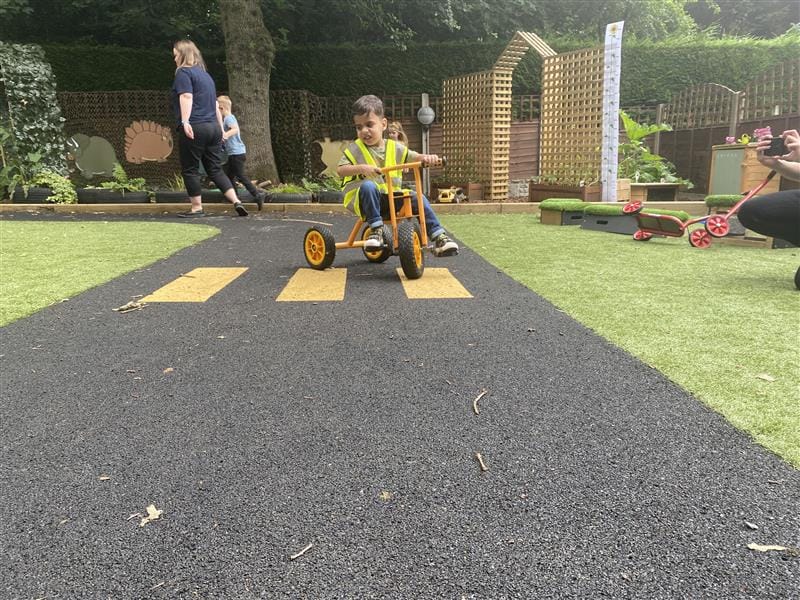
Obviously, this takes a bit of planning from a safety perspective in the school playground - you may need to allocate a specific section of the playground for cycling activities so that children aren’t crashing into each other - but this is relatively straightforward to do.
Playground markings and flexible fencing can help to achieve this brilliantly.
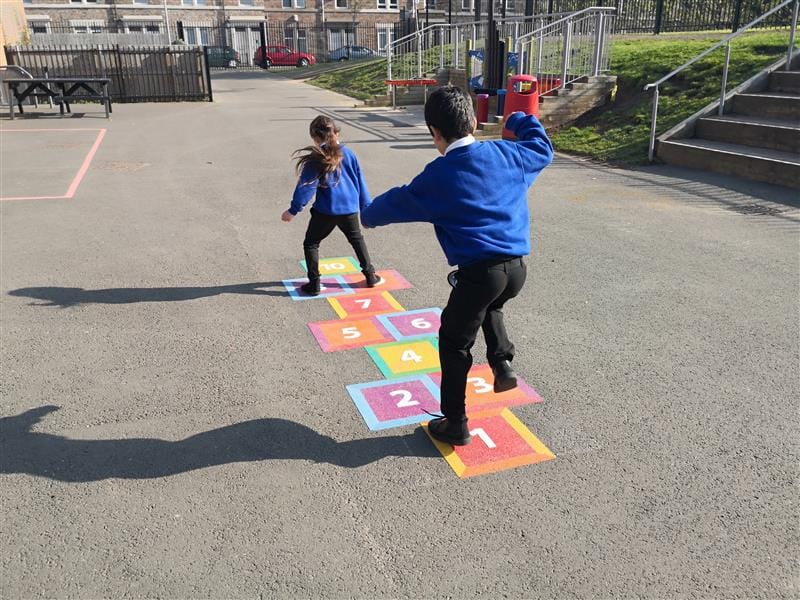
Make Worry Busters!
Anxiety very often manifests itself physically, making children much more fidgety than they would be when they’re feeling relaxed.
On another level, some children with particular Special Education Needs find they are more comfortable and can focus and pay attention much more easily if they have something small to fidget with while they are learning that will satisfy their yearning to move.
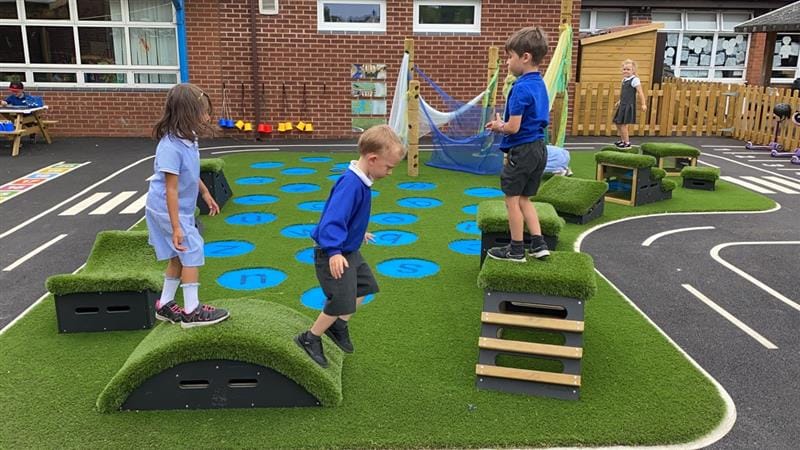
Heading out to the playground naturally presents plenty of opportunities to move - and it’s here that you can find and use natural sensory resources for children to build their own ‘Worry Busters’ as a method to help with relaxation.
You can use pebbles, mud, fallen leaves, or other natural resources they can find that provide something tangible to hold.
Pebbles can be particularly therapeutic thanks to their weight and smooth, cool texture. Invite children to pick one, and find a comfortable place to sit in the playground to hold their pebble.
Focus on how it feels in their hands - do they find squeezing or rolling it is calming? Provide marker pens for them to draw patterns or write positive words about themselves or their friends on their pebbles, then encourage discussion about what they have drawn or written, and why.
Product Spotlight
How can they lift somebody else’s mood with kind words? What makes them feel anxious? How can they use objects like this to help them feel more calm and confident? Does it help to talk with others?
Try something similar with fallen leaves - ask children to just play with their texture, roll them, fold them, scrunch them, tear them up - whatever they find works best.
Make mud pies and turn them into muddy mood faces. Keeping their hands busy, mixing, making and creating, is equally as therapeutic - children can use their fingers or a stick to draw a face in the mud pie to represent how they are feeling. The idea is to help them notice their emotions and learn how to voice them.
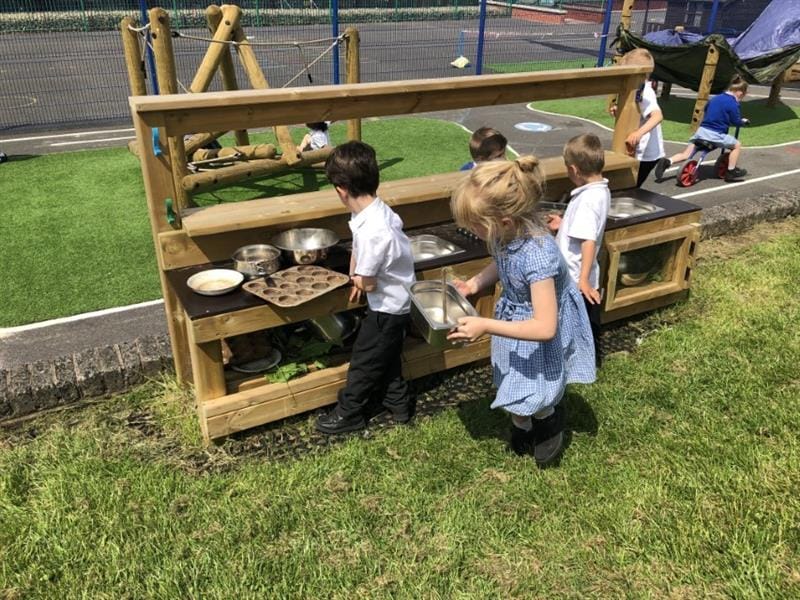
The Sky's the Limit
If you’re limited on time and resources, turn to the sky!
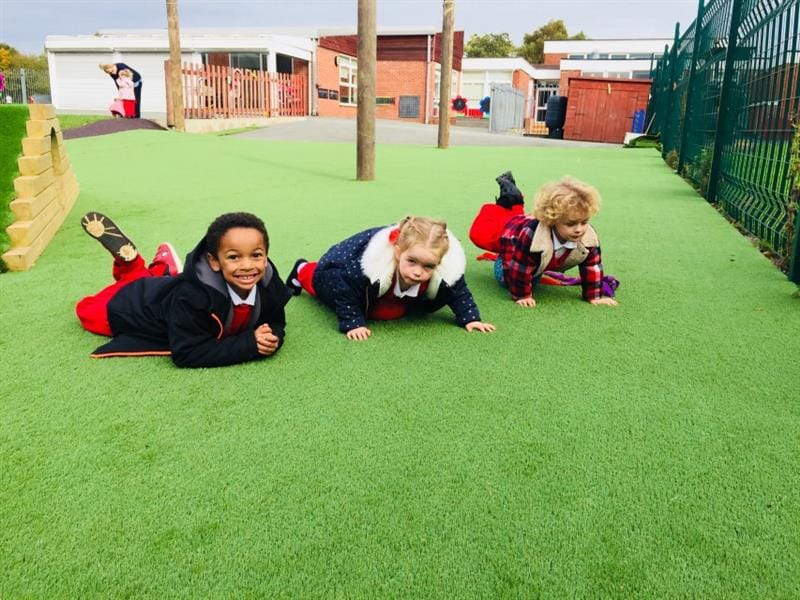
Ask children to sit or lie back in the playground and look up to the clouds. Concentrate on breathing deeply and let their hands feel the texture of the ground beneath them. Notice the cloud formations above - what can you see? A face? An animal? Can you describe it?
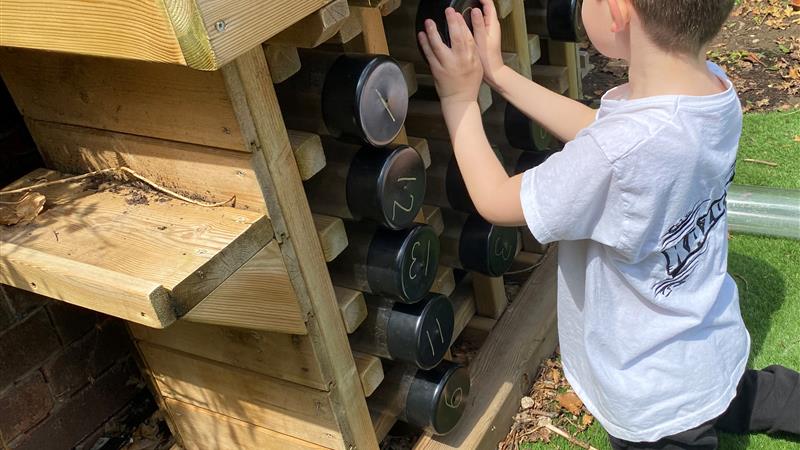
Now take a deep breath in, hold it, and as you do so, think of whatever you worry about getting caught up in that breath. Exhale and blow that worry out for as long as you can - blow it up to the clouds and imagine it travelling away with them.
In the Mood for Music
Music has a real influence on mood - it can be wonderfully therapeutic and seldom fails to lift spirits. Your playground is the perfect place for children to build their confidence and play out a tune of their own!
Building a creative musical zone in the playground is really easy to do.
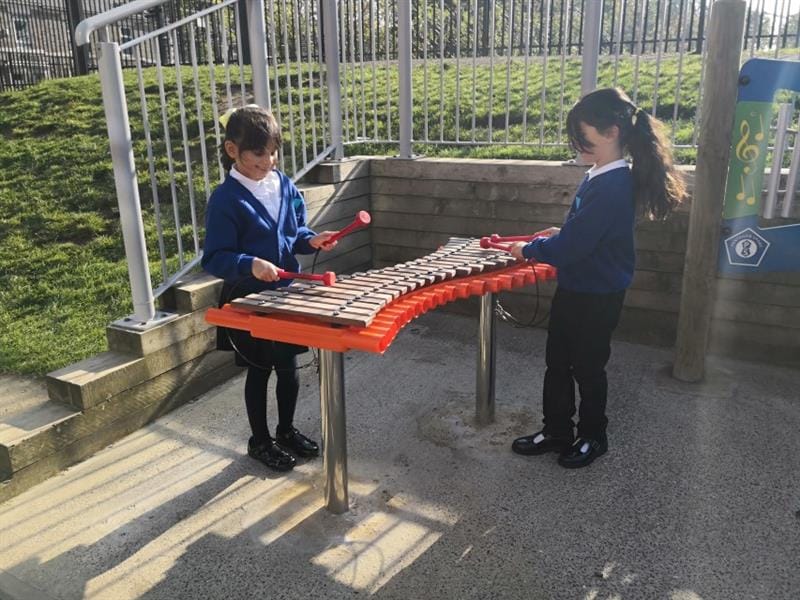
You can combine a selection of musical instruments made specifically for the outdoors - chimes, xylophones, drums, batonka panels - with traditional household items such as pans, wooden spoons, metal colanders, wind chimes etc - whatever you can get your hands on that makes an interesting noise!
Fix them in the ground or to a fence, hang them from a tree, store them in a box - anything goes.
Then it’s up to you and your class, day to day, how you use it. Perhaps you want to encourage them to make calming, gentle sounds with their instruments, or use sound to work out and demonstrate their mood. Or perhaps they want to form a rock band to liven things up - whatever the mood dictates!
Pause for Play
One of the most important things of all for children’s wellbeing is to remember that they need time and space to just simply play.
Free, happily uninstructed, using their imaginations and having fun. It’s the best stress buster there is at any time of year!
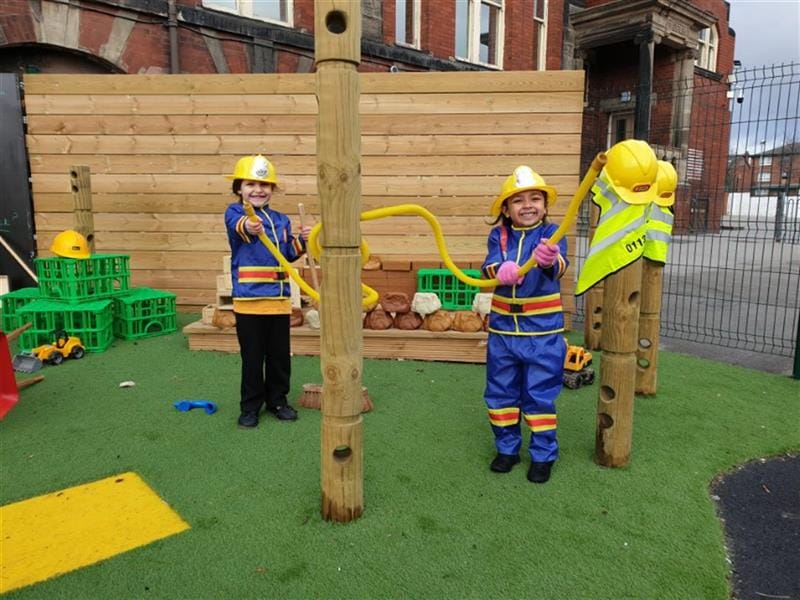
If your children have access to a playground that features a combination of some good quality active and creative play resources for them to choose from, along with open space to run, opportunities to connect with nature, and somewhere to sit, rest and chat with friends, then you’re already there.
Looking to improve your playground to promote wellness? Our Playground Consultants will work with your school to design a playground environment that suits your children and school needs. Contact Us for free, expert advice.
